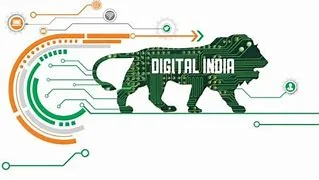Digital India 3.0: How India Is Quietly Leading the Global Tech Revolution
In the last decade, the phrase "Digital India" has become synonymous with progress, inclusion, and innovation.
But in 2025, with the launch of Digital India 3.0, the world is witnessing something more profound:
India isn’t just participating in the global tech race — it’s quietly leading it.
From AI-driven governance to grassroots digital empowerment, India’s latest tech wave is setting new global benchmarks.
This is the story of how a developing nation redefined itself — and now, the future.
The Evolution: From Digital India to Digital India 3.0
When the Digital India initiative was first launched in 2015, the goals were ambitious:
connect rural areas, improve internet accessibility, boost e-governance, and foster digital literacy.
Digital India 2.0 (around 2020) shifted the focus toward building robust tech startups, encouraging digital payment systems like UPI, and pushing for data sovereignty.
Today, Digital India 3.0 is about global leadership.
It’s a strategic expansion: not just empowering citizens, but also positioning India as a technology superpower.
Some of the major pillars now include:
-
AI innovation at scale
-
Web 3.0 infrastructure
-
Indigenous chip manufacturing (semiconductors)
-
Expanding 5G and working on 6G
-
Deep-tech startup ecosystem
-
Smart cities and e-governance 2.0
Explore India's journey in tech entrepreneurship ➝
Key Drivers Behind India’s Global Rise
1. Government-Industry Collaboration
Government bodies like MeitY (Ministry of Electronics and IT) are working hand-in-hand with tech giants like Google, Microsoft, and Indian unicorns.
Public-private partnerships have led to landmark projects in cloud computing, digital health records, and blockchain governance models.
The PLI (Production-Linked Incentive) schemes for electronics and semiconductor sectors are also attracting global investors.
2. Demographic Dividend
With a median age of just 29, India has one of the youngest and most tech-savvy populations.
An entire generation has grown up with smartphones and digital payments, creating a massive digital-first consumer base and workforce.
Learn how young India is driving the creator economy ➝
3. Digital Public Infrastructure (DPI)
India’s DPI model — like UPI for payments, Aadhaar for identification, and CoWIN for vaccine distribution —
is now being studied and adopted by other countries.
By offering APIs and open-source platforms, India democratized access to tech for startups, businesses, and governments globally.
Major Achievements Under Digital India 3.0
a) India’s Semiconductor Revolution
India’s first indigenous semiconductor fabrication plants have started production in 2025.
This achievement is crucial at a time when the global chip supply chain is volatile.
Government incentives, international collaborations, and research hubs like Semicon India Program are propelling India toward becoming a chip manufacturing giant.
How India’s semiconductor dream is reshaping the global tech landscape ➝
b) Rise of Bharat Web3
Decentralized apps (dApps), blockchain-based identity verifications, and crypto adoption (within regulatory frameworks) have skyrocketed.
The vision?
Make India the global hub for safe, scalable, and socially responsible Web3 innovations.
c) 5G for All — and 6G Trials
After rapid 5G rollout even in rural belts, India is already conducting 6G trials in collaboration with institutions like IIT Madras and ISRO.
The goal?
Not just speed, but global leadership in telecom standards.
Discover how India’s telecom expansion is bridging digital divides ➝
India’s Global Tech Influence: Real and Growing
India is no longer just the “back office” of the world.
It’s now setting standards, innovations, and policies.
Some recent highlights:
-
G20 Digital Economy Presidency: India shaped global conversations on data governance, AI ethics, and digital inclusion.
-
Indian Startups Going Global:
Companies like Zoho, Freshworks, and Zerodha are now global tech players, competing with Silicon Valley giants. -
Tech for Humanity:
Through initiatives like Digital Public Goods, India is exporting platforms (like CoWIN) to developing nations.
Challenges on the Horizon
Of course, the journey isn't without hurdles:
-
Data Privacy and Cybersecurity:
As digital footprints grow, safeguarding data remains a critical challenge. -
Digital Divide:
While urban areas race ahead, ensuring rural and tribal areas aren't left behind is key. -
Global Tech Competition:
India must continue innovating rapidly as it competes with giants like the U.S., China, and the EU.
Yet, there’s an optimistic realism in policy circles.
The focus is on inclusive, secure, and responsible digital growth.
Digital India 3.0: A Model for the World?
Countries in Africa, Southeast Asia, and Latin America are now actively studying India’s digital transformation model.
India’s JAM trinity (Jan Dhan bank accounts, Aadhaar IDs, Mobile phones) and its success in driving financial inclusion are particularly admired.
Unlike the West’s corporate-driven model or China's state-dominated ecosystem, India offers a unique middle path — combining innovation, democracy, and scalability.
Why India's digital model is inspiring developing nations ➝
Final Thoughts: The Silent Revolution That Could Change Everything
When history books are written about the 21st-century tech revolutions, India’s story may no longer be a footnote.
It may well be a chapter titled: "The Rise of the Digital South."
Digital India 3.0 is proof that transformation doesn't need to come with loud fanfare.
Sometimes, it happens quietly — one startup, one young innovator, one government policy at a time.
And the world, often distracted by other loud players, is slowly realizing that the future might just have "Made in India" stamped all over it.

Comments
Post a Comment